Let's talk...
About the drawings: We can browse the book and direct our child’s attention to the book’s facial expressions, and the gradation of colours from red, to orange, to yellow. We can ask our child: How angry does the book feel now? A lot or a little? How did you know that?
About feelings of anger: We can ask our child: What causes you to feel angry? What happens to your body when you get angry? What helps you to calm down?
Let's communicate...
We act out various daily events with different emotional states with our child; for example: we can ask them to act as if they’re eating pizza while angry, or combing their hair while scared, or reading a book while happy, and so on. This simple activity enables the child to identify andbe aware of their different feelings, which helps them control them.
Let's create...
We can build a “comfort corner” in the house with our child. We might put a toy that they like there, different drawings, a comfortable chair, a small blanket, a water bottle, and whatever our child wants from the tools that help them. And when they feel angry, we can ask them: Let’s go together to the comfort corner for you to calm down, and we’ll continue our talk there. We can maintain physical contact like patting on the hand or shoulder, and ask them from time to time: Do you still feel angry now? And we continue doing this until they calm down.
Let’s talk...
About the child’s opinion:
Mr. Round and Mr. Square see things in contrasting ways. We can ask our child: Are things really contradictory? How do you see it? Do you think the dog is first or last? Is the car really moving away or coming closer? We can encourage them to use expressions like “it depends on” or “according to,” to stimulate seeing things from multiple angles.
Similar experiences: we can ask our child: Have you ever disagreed with a friend?What was that like?
Let's stimulate thinking...
We can look at household items and describe them from Mr. Round’s and Mr. Square’s perspectives, for example: I see a wall behind the TV, or a TV in front of the wall. Let’s describe other items using different expressions like: in front-behind, above-below, or any other appropriate expression.
Let’s enrich our language...
The story is full of opposites, such as: near-far, first-last, bright-dark, and others. We can find them and use them to describe what’s around us.
Let’s create...
We can draw several circles on one paper and several squares on another, then create shapes and drawings from each circle and square.
Let's play...
We can compete to collect the largest number of items in our house that contain different shapes: circle, square, dots, parallel lines, and others.
Let’s talk...
About pirates and captains: We can ask our child: Is Salman a captain or a pirate? What’s the difference between them? Can he be both?
About flexible thinking: We can ask our child: Have you ever understood something in two different ways? Or have others interpreted it differently?
About similar experiences: We can askour child: Have you ever gone on a journey or had an adventure where you discovered something new? Where and what did you discover?
Let’s enrich our language...
We can learn new words like: mast, cabin, dozen, gang, amber, and others. We canlook for rhyming words in the text like: qursan (pirate), qubtan (captain), qumsan(shirts), sa’dan (monkey), farman (decree) and others.
We can try to understand their meanings and search for new words with the same rhythm.
Let’s create...
We can dress up as pirates, draw a treasure map, and go “pirating” together on an exciting search journey around and inside the house!
Let’s explore...
Characters: We can search for stories about famous maritime figures mentioned in the text, like Magellan, and others not mentioned, like Ibn Battuta, Khair ad-Din Barbous,and Sinbad. We can learn about researcher Jane Goodall and the fictional character Tarzan.
The Map: We can examine the map below and follow Pirate Salman’s ship route and explore the cities he visited: Who are their inhabitants? What is their traditional dress and folk food?
Let's talk...
About characters in the story: We can compare the traits of the merchant, the tiger, the bull, and the rabbit. We can deduce what distinguishes them through their behaviour.
About the concept of justice and fairness: Does doing good always bring good in return? We might initially think that the good deed the merchant did for the tiger would lead to a disaster, but the cleverness of the rabbit shows us a different outcome. What can we conclude?
About the trust: A simple word that can be expressed through feelings, thoughts, and actions. We can recall people we trust deeply. How did that trust develop?
About experiences from our lives: Have we done a good deed and offered help to someone? We can recall experiences from our lives where we received help or provided it.
Let’s enrich our Language...
New words and vocabulary: We can familiarize ourselves with unfamiliar words and understand their meanings.
Punctuation marks: We can observe question/exclamation/quotation marks. What do they mean?
Proverbs and sayings: We can search for proverbs, sayings, and admonitions that talk about doing good, justice, caution, and other meanings that captivate us.
Let's create...
Role-playing: Each of us plays the role of one of the story’s characters. We can think about their situation, feelings, and expressions.
Courtroom game: We can choose situations from our daily lives, and each of us can play a role in defending a different position. Who among us is the judge/accused/lawyer? Who supports another character?
Let's explore...
Nature: We can go on a hike to the nearby nature. Which trees do we notice? What animals might we encounter? We capture natural scenes and compile them as a memory of our enjoyable outing together.
Animals around us: Are there any pets in our neighborhood looking for shelter or food? How can we help them safely? (We might prepare a box for cat food or a bird feeder).
Let’s talk...
About trying and experimenting: The bear planted seeds that blossomed into similar flowers, except for one plant that didn’t bloom. Nevertheless, he didn’t give up, he took care of it, and provided all the necessary conditions. We can ask our child: Have you ever tried something and didn’t get what you wanted? How did you feel? What did you learn? Did you change something during your attempt, as the bear did?
About differences: Children enjoy planting seeds and observing their growth. This is an opportunity to talk to our child about the conditions for the growth of each type of plant (the amount of water and light it needs) and about what is common and different in the growth of each type.
About different perspectives: We can follow the drawings in the story and compare the rabbits and the bear. We can ask our child what the bear might be thinking about the plant, and what the rabbits might be thinking. Why do they have different ways of thinking?
Let’s enjoy leaning...
Caring for plants requires the ability to wait and to be patient, a skill which our child may still lack. We can support them in developing this skill by agreeing to perform specific daily tasks that suit their abilities, such as watering the plant or measuring its height with a small ruler and marking it. Imagine how happy your child will be when they share in making a healthy dish from vegetables they planted in a pot on the balcony or in a garden bed!
Let’s enrich our language...
In the book, there are two stories happening at the same time. We can enhance our child’s narrative ability by thinking up stories. We can look at the drawings and creatively add alternative endings of our own.
Look through the...
Look through the book together and examine the unusual illustrations that accompany the text. Notice the various perspectives the illustrator used in creating these pictures. Which pictures show the action from above—and which from the side? Talk with your children and ask them why they think the illustrator chose to portray the events on the bridge as she did.
Sometimes, before we...
Sometimes, before we arrive at a good idea, we first have to try (and discard) some not-so-good ideas. Together with your children, go back over the various solutions which the bear and the giant proposed in the story. What are the upsides and downsides of each idea?
Do you remember...
Do you remember the game of “Golden bridge”? Stand opposite your child and hold both his hand high to form a bridge. Invite other family members and friends to pass under the bridge, while singing: “Oh Golden bridge, Oh golden bridge/ we all pass under you and someone will be caught”. Whoever is passing the minute you say “caught” is out.
Let’s talk...
Drawing the monster: Before reading, we can ask the children to draw a monster, describe its shape and colour, and ask: What scares us about it? How does it live? Which languages does it speak? When do we see it? Then we can read the story and compare between the monster we imagined and the monster in the story.
About our desires and tendencies: Both the child and the monster were sensitive to each other, and each got to know the other’s desires and needs while preparing for the meeting. We can follow the child and the monster in the story and learn about what each of them wanted and required and how they prepared for the meeting. We can ask our children: How do we prepare to receive a guest?
About Preconceptions: We can follow the thoughts that the child and the monster had about each other and talk about what they found in reality. We can ask our child about our perceptions of others. How are they made? Is our perception of others always correct? We can compare preconceived notions with reality.
On friendship and difference: The monster and the child are different, but they manage to become friends. We can ask our child: Do you have a friend? How are they similar to you? How are they different from you? What are the things that you two do together? What are the things that both of you do alone?
Let’s act...
We impersonate the characters of the story: “the child and the monster” and act them out. We can invite our child to think, feel, speak, and express themselves in the same way.
Let’s communicate...
We can write a letter: The power of the letter stands out in the text. We can help our child to write a letter in which we express our opinion about the book, and we send it via e-mail to the Al Fanous Library project.
Let’s have a conversation...
The book’s drawings can speak: We can follow the drawings, and we can talk about the various disturbing events that happened with the dogs. We can ask our children to describe them, compare them to Winston’s thorn, which is stuck. We can ask them: What do they think of Winston’s behavior? What is strange? What is funny?
About feelings in the aftermath of disturbing events: Winston felt that he was the least fortunate, the most miserable in the world, because a thorn was stuck in his foot. We can talk about upsetting events that happened to us: How did we feel? How do we overcome these bad feeling? What consoles us and guides us, and who helps us with that?
About the comical things: We can think the details of the drawings and talk about the funny things about them. We can share funny events that happened with us with others. What usually makes us laugh? And what makes us happy?
About feeling lucky: We can talk about the times that we felt lucky. Why did we feel that?
Let’s enrich our language...
The story contains a rich vocabulary that we can search for in the text and in the signs in the drawings. We can read them to our children and explain them
The drawings enrich our descriptive language. We can name the objects, and describe the animals’ actions, feelings, and thoughts. We can also ask: What is going on in the drawing? what happened? Why? how? There are many questions that motivate our child to express and enrich their language.
Let’s create...
We can prepare a funny drawing using the collage technique by cutting out paper clips and pictures from different magazines and pasting them in a funny way.
We can write a comic book like this one. We can base the protagonist on one of the family members. We can recall a story-like event that happened with a family member.
Let’s communicate...
During our family time, we can create a beautiful ritual, where each of us talks about a beautiful or funny event that happened to them during the day.
We recall...
We recall the animals in the story that were entirely disturbed by the bird’s songs and shunned the bird away, as well as the animals that shared the bird’s joy. Discuss the different reasons that made the animals shun the singing bird at that moment.
The Sunbird expresses...
The Sunbird expresses its joy by singing. Discuss with your child the different ways in which we express strong emotions such as happiness, anger, or sadness. Which methods suit each of us and make it easier for the people close to us to understand our feelings, share them with us, and support us when needed?
The Sunbird wants...
The Sunbird wants to sing, but his desire contradicts the needs and desires of his animal neighbors. Discuss situations that may occur in the family in which the desires of different family members may conflict (like playing a noisy game while someone is asleep.) How can we cater to everyone’s desires and needs?
La la la la...
“La la la la la… How beautiful life is…” the Sunbird sings and asks other animals to sing along. Think about nice topics to sing in a family choir.
The Sunbird is...
The Sunbird is a small bird that characterizes the scenery of our homeland. We see it many times in our gardens sipping flower-nectar with its pointy beak. It is fun to learn about it via looking at pictures and reading materials. We can also design a small device to hang on a tree or put on the garden ground, fill it with grains, or vegetables and fruits leftovers, or fill it with water to attract beautiful birds to our garden.
The drawings...
The drawings of the book are inspired by Persian miniatures drawn from the native culture of the illustrator. Look around the house for objects with the same features (such as a rug, ceramics, etc.)
We look for...
We look for little rabbit’s displays of anxiety or fear in the illustrations. What do we do when we are afraid? We talk with our children about the things that may worry them and think together about ways of relief.
The wolf overcame...
The wolf overcame many obstacles to reach the house of his friend, the rabbit. We try to remember a similar experience with our children, in which they had to overcome hardships to reach a goal.
Despite the rabbits...
Despite the rabbits’ fear of the wolf, little rabbit and the wolf are friends. Do we know friends who are different?
The wolf is...
The wolf is an unexpected guest at the rabbit’s birthday party. Who may be an unexpected guest at our birthday party?
This book is...
This book is distinguished by the relation between the text and the illustrations that reflect what the child imagines in contrary to what the mother says. We can imagine additional obstacles that the wolf may encounter and overcome.
We can chat...
We can chat with our child about the “surprise” that the friends prepared in the woods, and about the “surpris” that was waiting for the family when they returned. What is the difference between them? With our child, we can recall surprises that made us happy, and others that angered us, frightened us, or upset us.
What did we see...
What did we see when you read the story for the first time: a duck or a rabbit? Did our child see the same drawing? Which is easier for us to see in each drawing: the duck or the rabbit? If we had to decide the identity of the animal in the book, would we have chosen the duck or the rabbit?
We can look...
With our child, we can look at the drawings, and follow the attributes and actions of each creature with them. For example, the beak of the duck and the ears of the rabbit, the duck flies, and the rabbit jumps. We can think together about other features and actions that our child may wish to draw.
We can play...
With our child, we can play the game “What is hidden in the drawing?”: Each participant draws an abstract drawing (which may be random lines) and another participant tries to distinguish something familiar in it, then looks at the drawing to highlight it.
What happens when...
What happens when the other player does not succeed, or does not accept, to see what we see? We can show our child drawings with optical illusions (drawings like this can be found on the Internet or on the book’s page on the Lantern Library website). We can then have a conversation with our child about what they see.
The perspectives change...
The perspectives change at the end of the book; Whoever sees a duck in the beginning sees a rabbit, and vice versa. Have we ever had a change of mind following a different point of view? How can we convince others to see reality through our own eyes?
On the first page...
On the first page of the book, there are clouds of different shapes and sizes. Can we distinguish familiar shapes in them? It would be fun to go out and look at the clouds in the sky: what do we see?
The mice accuse...
The mice accuse the birds of eating the fruits, so they start shouting and cursing. You can discuss the mice’s hasty assumptions and hot-tempered reaction. What did the mice react as they did? Can you and your children remember some situations where you or they reacted angrily before they understood a situation? How did they or we feel then? And what were the consequences of our hasty reaction?
Borzok's experience...
Borzok’s experience with the field mice and with the big wild bird, made him see all birds as vicious until he nested with the birds and became their friends. We can reflect with our child on an experience at home or outside when he/she changed their mind regarding a person or a group.
At the end...
At the end of the story, both sides shared the ripe red fruits in the field. What can the mice share with their new friends?
Autumn is the birds...
Autumn is the birds’ migration period in our country. Perhaps take you child to a garden or into nature to watch migrating birds and also to search for abandoned nests.
What do birds like...
What do birds like to eat in our surroundings? Let us design a “restaurant” for the birds and hang it on the tree. We can put in it food (such as seeds, fruit or vegetables), and then check what our garden’s visitors like best.
Author/Illustrator...
Author/Illustrator Lio Lioni’s special technique is using parts of leaves to form the characters in his books. We may want to examine this technique with our child by letting him create his favorite characters from the story!
 The Angry Book
The Angry Book  Mr. Round and Mr. Square
Mr. Round and Mr. Square  Salman the Pirate Searches for Shirts
Salman the Pirate Searches for Shirts  Don’t Trust The Tiger
Don’t Trust The Tiger 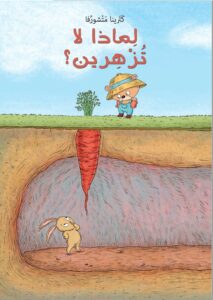 Why Don’t You Bloom?
Why Don’t You Bloom? 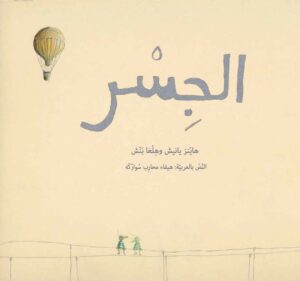 The Bridge
The Bridge 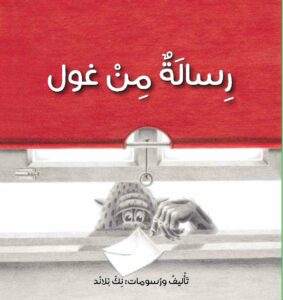 A Monster wrote me a Letter
A Monster wrote me a Letter 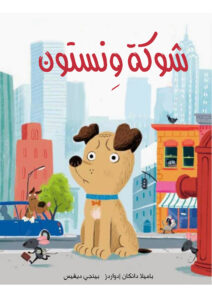 Winston was Worried
Winston was Worried 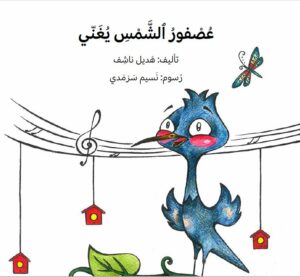 The Sunbird Sings
The Sunbird Sings 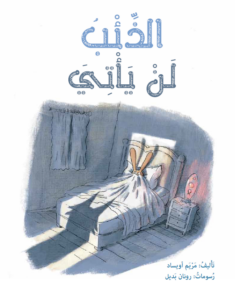 The Wolf Will Not Come
The Wolf Will Not Come 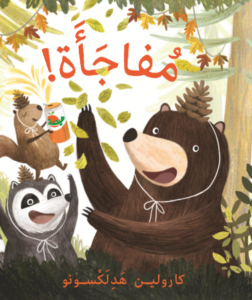 Surprise!
Surprise! 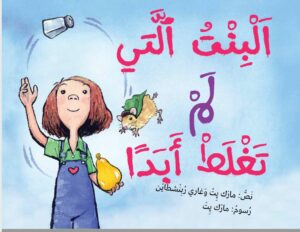 The girl who never made mistakes
The girl who never made mistakes 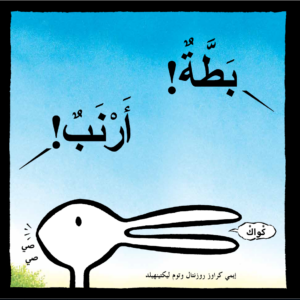 Duck! Rabbit!
Duck! Rabbit! 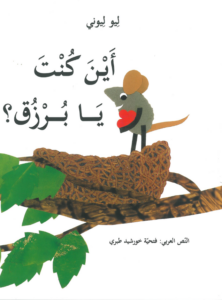 Nicolas Where Have You Been?
Nicolas Where Have You Been? 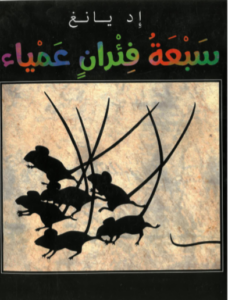 Seven Blind Mice
Seven Blind Mice 
